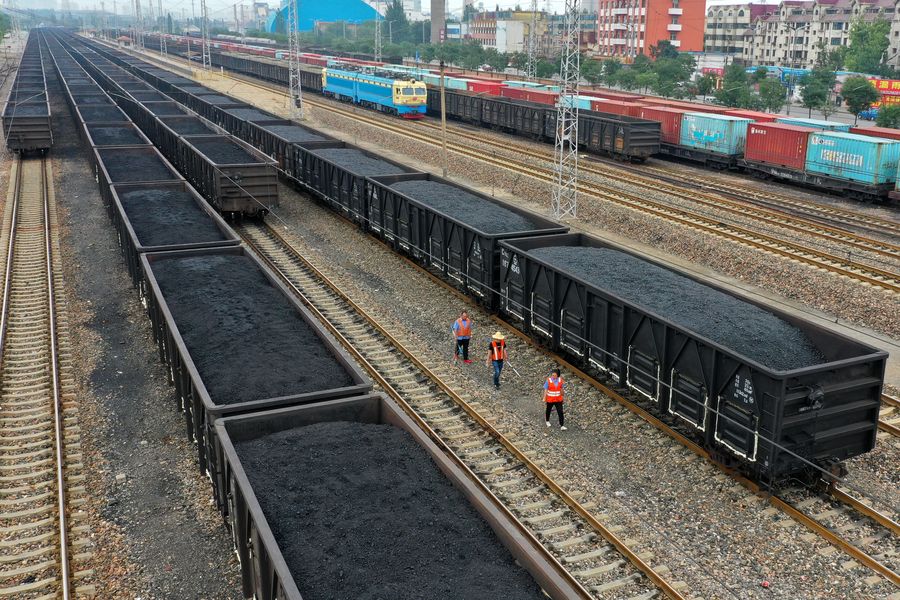The three causes of China’s power outages
As many as 20 provinces in China are suffering from power shortages, leaving businesses and millions of residents affected by power rationing. Where did this crisis come from? David Fishman, China energy policy researcher and manager at the Lantau Group consultancy, gives a brief primer.

China is currently facing a shortage of generated power affecting as many as 20 provinces, necessitating power rationing and power cuts. Power rationing began in some provinces in late August and became especially widespread by mid- to late September. For most provinces, the power rationing has affected only large industrial and commercial users and has been announced to consumers in advance, in what is called “ordered power consumption” (有序用电). In the three provinces comprising Northeast China, however, the power shortage has been especially severe, requiring the Northeast Grid to take emergency load shedding measures last week, cutting off power without warning (拉闸限电). These power cuts in the Northeast affected not just industrial and commercial customers, but even residential users and municipal traffic lights.
The shortage of power across China can be generally attributed to one of three different causes, which vary across the country and are more or less relevant in specific regions.
1. Expensive coal
The supply of available power is greatly reduced because coal-fired generators are unwilling to operate their plants at a loss. Fuel coal prices had already been steadily creeping higher all year and were further exacerbated over the last two months by a complex mix of factors that temporarily reduced coal production greatly. When the scarce coal gets expensive enough, a tipping point is reached, where generators are fundamentally unable to recoup their costs to purchase fuel by selling their power. This point has been reached already in many provinces.
China uses a mix of regulated and market channels to sell generated power, but the selling price for generators is capped by policy in both channels. Generators cannot freely charge more for their power, even if they had to pay a lot more for the fuel. While this price cap is intended to shield end-users from excessively high power prices, in this case of extreme coal costs, it has ensured that generators are only able to make losses on their power generated. In response, they have refused to operate, or reduced their output drastically. The high fuel costs are affecting generators in nearly every province currently exhibiting shortages.
2. Energy dual-controls
In some provinces, additional measures may have been taken related to the province’s performance toward its objective for “energy dual-controls” (能耗双控). Here, the dual controls refer to energy consumption and energy intensity, where consumption is the total volume of power consumed and intensity is the ratio between energy consumed and production output. Last week, a provincial “report card” was released, with a number of provinces identified as being off-track for meeting their objectives for consumption, intensity, or both. Provinces with bad marks were expected to act immediately to get back on track. Initial coverage of the energy shortages in Chinese media focused particularly on this dual-control policy response as a key cause of the power rationing, with expensive coal prices only mentioned secondarily. Later coverage, however, mostly swung around to blaming the high coal prices (appropriately so, in my view). While some provinces have specifically targeted high-consumption, high-intensity industries in their power rationing, these logically are also the industries that would be targeted in the case of power shortages caused by reduced coal generation, so it’s difficult to differentiate clearly in most cases.
3. Supply underperforming
Finally, some provinces are struggling with low power capacity due to other reasons, generally lower-than-usual supply in provinces particularly reliant on intermittent fuel sources. Yunnan, for instance, has had tight power supply for most of 2021, as its supply mostly comprises hydropower and hydrological conditions have been quite poor this year. The three Northeast (Dongbei) provinces were forced to move from “ordered power use” to “emergency load shedding,” as mentioned above, due to several days of very poor wind farm output last week. In both the cases of Yunnan and Dongbei, their shortages were further compounded by contractual obligations to export power to other regions.
Two levers for relief
In response to the power shortages, the NDRC and the NEA have been working on getting relief to generators in two ways: 1) Increasing the domestic supply of coal as quickly as possible to bring prices down, and 2) Raising the price that generators can earn for their power. The allowed coal-fired-power price has been temporarily raised already for power markets in Guangdong, Anhui, and Hunan, with more likely to come. This should allow some generators to start producing again. Over the medium term, though, coal production must ramp up to help prices come down.






